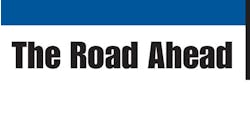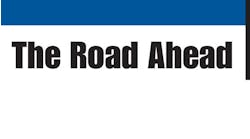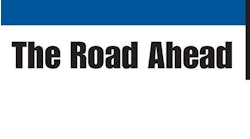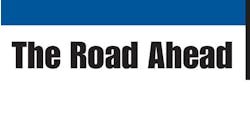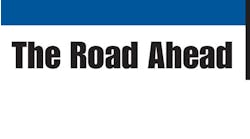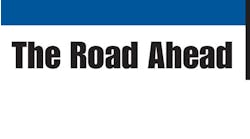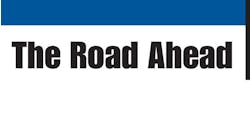THE reoccurring theme in this article is to master the management of time in order to improve cash management. Anything that reduces throughput time will reduce cash needs for the business.
Reducing cash needs translates into profits. For the typical truck equipment distributor, improving the bottom line can be done in a lot of different ways. Here are several suggestions for improved profitability:
-
Targeted price increases. Management's first efforts should be to review opportunities for product price increases. However, in recent years, pushing through price increases has not been easy. Even in the robust economy of the last decade, many customers have been very price sensitive.
In order to receive new orders, suppliers have often had to maintain old prices. But there are ways to initiate targeted price increases that will improve profitability. This can often be done without it becoming a point of contention with customers. A list of possible opportunities is as follows:
-
Some products, such as custom machinery or products for special markets or applications, may not be as price sensitive as core company products, and a price increase may not create problems.
-
Products that are recognized as industry standards or best in the industry can often command a premium. A company should use this position to extract higher profits while it can.
-
Product attachments or accessories can often have significant increases without affecting sales. Often pricing on product accessories are ignored because they are not core products. However, each item's margin should be reviewed to insure there is ample profit in carrying the item.
-
Prices for parts, especially proprietary components, can be an area where prices can be increased, sometimes substantially.
-
Rates for mobile and in-house repair services can often be increased. When considering increases, compare these rates to other similar local industries as well as competitors.
In all above-listed situations where a price increase is being considered, a sensitivity analysis needs to be performed to evaluate the specific impact each will have on sales volume. In most cases, a combination of these actions will provide increased margins without measurable volume impact.
-
-
Change the product mix. Another way of getting a weighted price increase is to change the mix of sales of products towards more profitable products. This can include the replacement of a popular old model with an updated version that is more profitable. Often the only way to make this happen is to create incentives for change. Listed below are several methods:
-
Increase the price on the old products to drive sales to the new, lower cost product.
-
Selectively change sales commissions to encourage salesmen to push desired products.
-
Add rebates or reduce discounts on products to drive the sales mix changes with dealers.
-
If new products are superior in operating life, give extended warrantees to new products to encourage purchases.
-
Increase availability of new products and reduce on old products by:
-
Limit inventories on old products and maintain greater inventories on new products.
-
Artificially inflate lead-times on old products and maintain shorter lead-times on new products.
-
Limit production capacity available to old products and commit much more capacity to new products.
-
-
Reduce overhead. Overhead costs generally include facilities, equipment, and administrative and management personnel. Listed below are actions for reducing these overhead costs:
• Increase facility and equipment utilization by doing one or more of the following:
-
Outsource manufacturing that is not in core competency areas and close down excess floorspace and associated overhead.
If outside costs are less than direct material, labor, and variable overhead costs, then move ahead. If outside costs are greater than these three costs, then it may make sense to keep the operations in-house. Subjective factors should also carry weight in these evaluations and should be part of every decision.
-
Add a shift. Instead of adding floorspace, increase use of the facility by adding multi-shift operations.
-
Cellular manufacturing. Cellular manufacturing concepts tend to utilize floorspace more efficiently. When cellular or work team concepts are implemented, multiple employees work in bays where only one employee had worked before. This dramatically reduces floorspace needs and reduces in-house lead-times.
-
Reduce inventory floorspace needs by implementing just-in-time manufacturing and demand-flow inventory control systems. In these programs, we have seen facility space requirements drop dramatically because of the elimination of inventory and the corresponding storage space.
Unfortunately, many overhead costs are connected with people. I would encourage businesses to perform a bottom-up staff justification with senior managers every six months to insure that all management services are needed and that all management personnel and functions are justifying their existence. This frequent review can add increased accountability and also eliminate unnecessary overhead costs and functions.
-
-
Reduce purchased material costs. Purchased materials are the highest single cost of production in many businesses. Ongoing cost reduction efforts need to be in place to stay abreast of all the purchasing opportunities available to companies. Listed below are approaches to purchasing cost reduction:
-
Periodically perform a make-buy analysis on products to see if some can be made at less cost in-house. Use an activity-based accounting approach to truly understand the overhead changes and the expected P&L impact of a decision.
-
Place a priority on ongoing cost reduction. Have written cost reduction goals and action plans and tie incentives to the successful and timely completion of the programs.
-
Start thinking bigger. If the business has been buying components through a distributor, try to go direct to the manufacturer. This may mean implementing different buying habits, but it can often be done without significant additional inventory.
-
Set up hybrid programs if service and inventory levels are issues. In these programs, the distributor is still in the supply loop, but the manufacturer provides rebates that were then passed on to the buying company. The results of these programs delivered 10% to 20% reductions in prices.
-
-
Reduce labor costs. Labor and its variable overhead can be a high cost for a company. There are many ways to attack these labor costs, and most of these actions deal with increasing employee productivity and they include:
-
Insure employees are fully trained and equipped to do their job. Do not give employees and supervisors an excuse to avoid accountability.
-
Once the employees have arrived at a high level of performance, retention becomes an issue. The ongoing introduction of untrained employees on the production floor creates productivity problems and drives labor costs up substantially. A good compensation system promotes retention.
-
Insure floor supervisors are reinforcing training and holding the shop employees accountable for productivity and quality. Supervisors must also consistently apply human resource policies and perform wage and performance reviews in a timely basis.
-
Develop incentive programs as part of the compensation schedules. Tie desired employee behaviors, such as improved quality and productivity improvements, to business performance and share in financial successes.
-
Outsource labor. Perform make-buy decisions and determine if this is an option. This analysis is best performed using an activity-based accounting approach that factors in all expected changes in variable and fixed overheads.
-
-
Reduce quality costs. Quite often companies do not fully understand the cost and cash impact that quality can have on an organization. Quality is often viewed only as it pertains to products. But the quality of information can also have a large impact on costs.
Product specification and design problems can often create a variety of difficulties. Listed below are common problems that occur because of these information quality problems:
-
Incorrect specifications can cause the wrong material to be ordered. This material either ends up sitting in inventory or a restocking penalty is charged to send it back to the supplier. Either way it consumes cash.
-
If the product is designed improperly, warranty costs are incurred to correct the errors, and more labor and material are required to build it to the desired specifications.
-
Purchasing and material planning errors create delays and rework, which increase throughput time and inventories, and both of these scenarios cause cash problems.
-
Production errors create delays, adding rework costs and lead-time, which drives higher inventories.
-
If invoicing is incorrect or delayed, it can either cause a loss of revenue because of inadequate billing or a delay in payment.
-
Turning Assets into Cash
Often capital equipment and facility assets have a greater market value than what is owed on the asset. Their sale can therefore generate cash. If these assets are not being used or will not be used in the foreseeable future, the sale of these assets may be a valid course of action. However, if these assets are being used for production, additional analysis should be performed to support a decision. If a company is thinking of shutting down existing operations, they should follow these steps:
-
Evaluate in-house manufacturing operations and evaluate which operations or products should be sent outside to a supplier
-
In order to assist with the evaluation, identify the subjective benefits or drawbacks of each scenario and assign hard value or costs to each.
-
An activity-based cost accounting study will also show how changes in overhead will affect the entire program from a P&L standpoint.
-
If outsourcing the operations appears to be cost-effective, studies must be performed to analyze if partial assemblies or finished goods inventories will need to be inflated in this new environment. The cash impact of this scenario can then be quantified.
-
If the amounts of assets needed either way are equal, the business owner must make a decision based on other factors such as total financing available or environmental issues.
Turning Inventory into Cash
Of all the assets in a business, inventory is often the largest dollar amount, and yet it is the least desirable of all assets.
As an asset, inventory is generally limited in life expectancy and depreciates faster than any other asset. The American Production and Inventory Control Society (APICS) has recommended that inventory carrying costs be assessed at 30% per year because of interest, obsolescence, damage, and storage costs. If the product life cycle is short, such as with trendy consumer electronic products or fresh vegetables, the carrying costs will be much higher because of the potential obsolescence or damage costs.
With this potential high cost of carrying inventory, an ideal business would be one that required low levels of inventory. There are several ways to substantially reduce inventories and free up cash.
Reduce inventory through the implementation of just-in-time manufacturing concepts. Successfully implemented, these programs will substantially reduce inventory while improving fill rates.
In JIT, the inventory is maintained in very small quantities on the production floor or warehouse in controlled locations called “kanbans,” and it is replaced only as it is used. The inventory levels will never exceed the quantities established for the kanban because of the disciplines established with the system.
In these environments, instead of inventory turning four times per year it will turn weekly, daily, or even hourly in some situations.
The key element in making the systems work is minimizing the response time, whether in-house or with suppliers. Once the systems are developed and in place, the cash that is freed up is astonishing.
Work with suppliers on programs for them to own the inventory stored within the business until it is consumed. This is called consignment inventory. In these programs, the supplier will stock the locations and when the part is used in production it is then billed to the company. This can save a substantial amount of interest costs.
Making It Work
Reducing response and throughput time can also provide many other strategic advantages to a business and they are too numerous to mention here. Make a commitment today to develop a better understanding of these cashflow improvement concepts. Find out how these innovative ideas, taken across the entire business, will substantially reduce cash needs and accelerate the profitable growth of the business.
Ken W Mikesell, is president of Operations Management Consultants, Inc in Peoria AZ. He has over 25 years of operations and financial management experience. As both a business executive and senior management consultant, he has been the leader of successful business and operational turnaround efforts in a variety of industries. The company specializes in helping organizations formulate and execute strategic and operational breakthroughs to support profitable growth. His education includes a BSMCET, and MSIE from Montana State University and an MBA from the University of St Thomas in St Paul, Minnesota. More information about Operations Management Consultants, Inc. can be found at the website address www.bottomlinefix.com.
